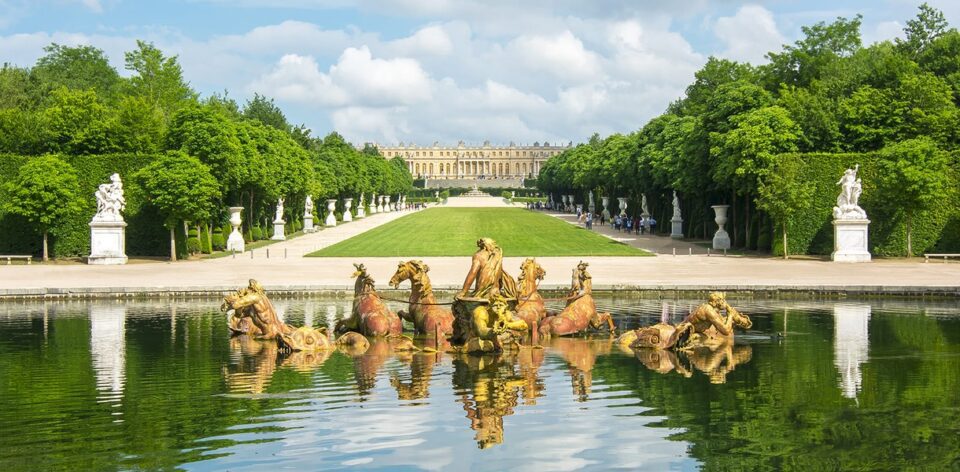Versailles attractions draw tourists year-round. This is not surprising: the ensemble is located just 20 km from Paris. You can get here in less than an hour. Upon entering the park, visitors feel overwhelmed: so many beautiful sights are close to each other. But it’s worth concentrating, planning your route wisely, and everything will fall into place. Moving from one site to another, you can get an idea of how the last monarchs of France lived. Maybe you will even feel like one of them. Here’s what you can see in Versailles in one day on your own.
Versailles Palace

There is currently no government residence in the world surpassing the opulence of Versailles Palace. It all began when King Louis XIII of France liked the hunting grounds around the village of Versailles, where he went hunting in the estate of Florentine-born Gondi. Louis immediately ordered the construction of a hunting lodge nearby. After Gondi’s death, all the surrounding lands belonged to the crown. The hunting lodge was slightly expanded and significantly fortified, making it look like a small fortress. It was here that Louis XIV lived from the age of 5 until he began his official reign.
Louis XIV feared living in the capital and preferred a well-fortified country residence. Its location was exceptionally advantageous: only 20 km from Paris. By staying remote, the king could simultaneously keep a close watch on the aristocrats. But Louis XIV was also concerned with prestige: he understood that the grandeur of the palace would elevate his authority with both his subjects and neighbors, so no expense was spared from the treasury for the development of Versailles.
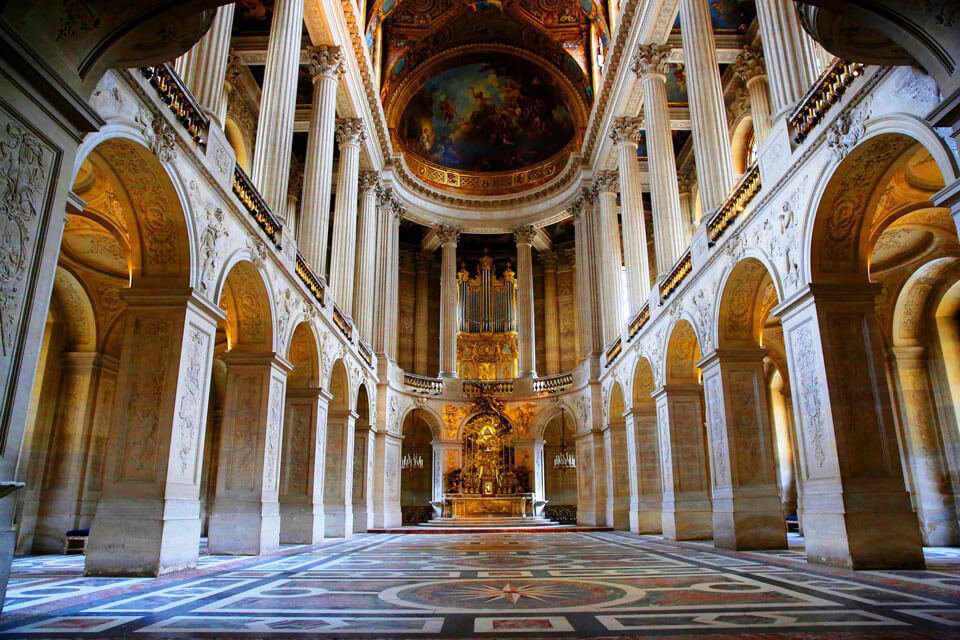
The palace was expanded, and the surrounding area was landscaped, creating a garden-park ensemble. After the arrest of Finance Minister Fouquet, all his confiscated assets were used for the project, and architects Le Vau, Le Brun, and Le Notre, who had worked on Fouquet’s palace, were commissioned to complete the royal residence. The king was struck by the luxury of the disgraced minister’s residence. Even the wars France was engaged in did not hinder the construction: work was only temporarily paused and then continued.
Louis XIV’s successors also continued to improve the palace, though on a much smaller scale. The work mainly involved interior renovations and landscape design. Versailles Palace is the central part of the city where French aristocrats had to settle to keep up with the king. Each built more or less lavish apartments, which now adorn the Parisian suburb.
Hall of Mirrors
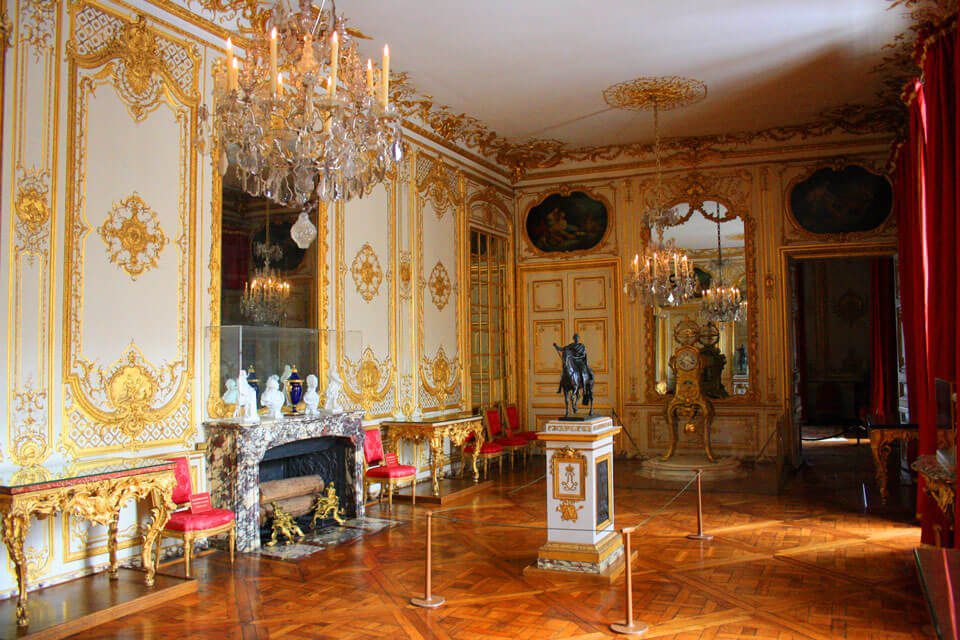
A unique hall from the reign of the Sun King. This luxurious gallery was created to immortalize the monarch’s victories:
- The ceiling is adorned with 30 paintings depicting victories in wars and successes in strengthening France’s economy.
- The enormous mirrors symbolize the wealth of the state and the crown, mirroring the shape of the window openings and placed in pairs opposite each other; only here, in the time of Louis XIV, could ladies and gentlemen see their full-length reflections.
- The gallery stretches 73 meters in length and is decorated with lilies (the symbol of the ruling house), roosters (the symbol of the kingdom), and images of the sun (the personal emblem of King Louis XIV).
But the Sun King also had practical goals: the lavish gallery was intended for the royal family’s comfortable passage from the palace to the church. Even in France, the weather can be unpleasant. And all this luxury served the state’s interests: receptions were held here, grand balls were organized, and important state agreements were signed. Some of the rich interiors were removed and melted down for the needs of the French army over time. But even today, the grandeur of the Hall of Mirrors astonishes tourists. The French government continues to use this part of Versailles for state receptions.
Royal Apartments

This part of the Versailles castle, consisting of six rooms, belonged personally to the Sun King. The value of the apartments lies in the fact that the interiors have been almost completely preserved. Today, tourists eagerly explore the rooms where the great monarch once lived.
All rooms are interconnected, one leading to another:
- The first hall is the loggia. Essentially, it is a vestibule leading to Louis XIV’s chambers. But even this small room is luxuriously decorated with marble. It’s impossible to enter the Sun King’s personal quarters directly: one must go through the guard room. The king’s personal guards were stationed here around the clock. This hall is very modest, with walls painted white.
- The next room marks the beginning of the apartments. Here, the king dined and rested. On the walls, you can see paintings of famous battle scenes. The authors of the paintings are Courtois and Parrocel.
- The Hall of the Bull’s Eye is the most beautiful room in the apartments. It is named after the southern window shaped like an ox’s eye. There are many large mirrors (a rarity in the Sun King’s time), with Veronese’s paintings hanging on the walls. The hall is adorned with a grille depicting dancing boys.
- The bedroom is an important room for monarchs. It was used for sleeping, private negotiations, and receiving ambassadors. No wonder the room is richly decorated: draperies and tapestries, paintings by great artists like Van Dyck, Caravaggio, Domenichino, and Reni. The Sun King died in this room.
- The last room is the Royal Council Hall. The interiors reflect the room’s purpose. Here stands a bust of Alexander the Great, vases depicting Venus and Mars. The walls feature wooden carvings.
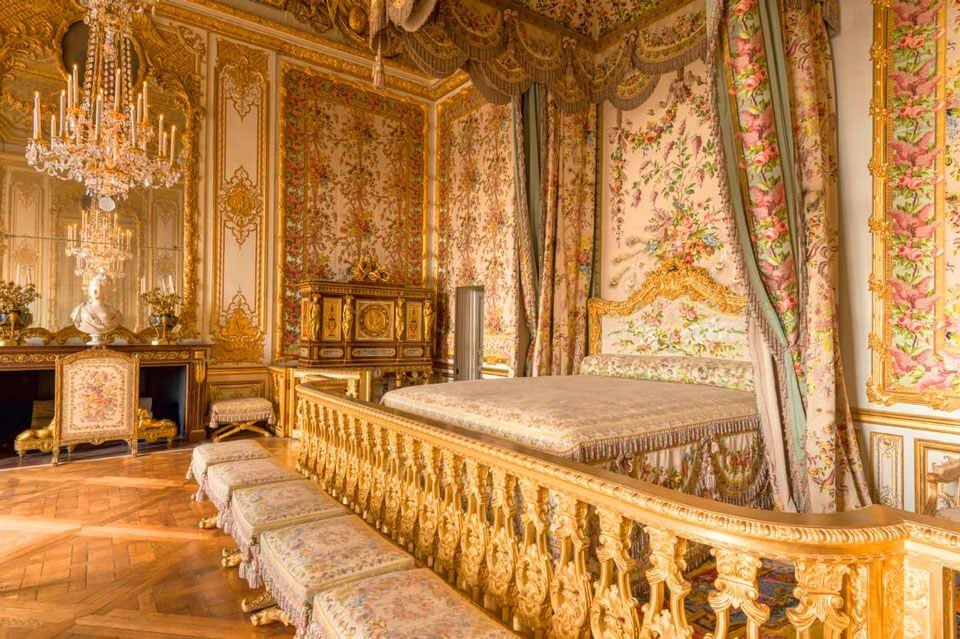
To explore the apartments, it is worth purchasing a single ticket: it is part of the tour program.
Chapels

During the Sun King’s reign, building chapels was both fashionable and profitable: if the client paid for the work upfront, they were subsequently exempted from property tax.
Five chapels were built at different times:
- The first chapel was built by the Sun King’s father, King Louis XIII. It was an unremarkable wooden structure two stories high. It was demolished during the construction of the Thetis Grotto.
- The second chapel was commissioned by the Sun King himself. It was built immediately after the completion of the new part of the palace. Initially, the royal family used the chapel, but then court sessions were held there. As the park expanded, more space was needed for service buildings, so this chapel was also demolished to build a guard barracks.
- Louis XIV built another chapel next to the second one for himself and his family, and later for the royal court. But soon this chapel became too cramped and inconvenient for the king. Unlike its predecessors, this building had a better fate: it was converted into a coronation hall.
- After completing work on the third wing of the building, the fourth chapel was built. By tradition, the Thetis Grotto had to be demolished. This chapel was used by the royal family until the early 18th century.
- The last chapel is an example of a long-term construction project: work began in 1689 and was completed in 1798, with a break for the war. The construction was finished by Cot. The building’s horizontal lines prevail over the vertical ones, leading some historians to call the Saint Louis Chapel a giant hearse. However, the building is richly decorated on the outside, and its luxurious interiors are impressive.
Services were held in the chapel until the late 19th century. Today, it is used by the government for meetings with official representatives. The chapel has excellent acoustics and regularly hosts concerts.
Church of Our Lady

Notre-Dame of Versailles is the parish church that also served as the home church for the palace owners. Louis XIV, Louis XV, and Louis XVI were married here, took communion, and were given last rites. Records of the marriage, birth, and death of royal family members were made in the parish books of the cathedral. The project was designed by Jules Hardouin-Mansart. He developed the building in the fashionable (at the time) style of French classicism. Construction progressed quickly: it took about two years from laying the first stone to consecrating the cathedral.
But looking at Notre-Dame of Versailles leaves a strange impression: the cathedral looks too low to the ground. This is not a mistake by the architect: Louis XIV imposed a height restriction on surrounding buildings to preserve the view from his residence’s windows. Restoration work was carried out in the 18th, 19th, and 20th centuries, adding new details to the facades and interiors. The latest renovation involved replacing the main altar in 1999.
Versailles Orangery

The Sun King wanted to lead in everything, including botany. Under his orders, gardeners maintained a vast collection of citrus trees that simultaneously bloomed and bore fruit, just like in their homeland. This was achieved through a specially developed system of irrigation, pinching, and feeding. The remarkable achievement was that the plants were kept in tubs with soil and placed in the orangery only during the cold season. In spring and summer, the orange trees were displayed in the garden (parterre).
The building was designed very efficiently: light penetrates through large southern windows, and the ceiling has a vaulted profile. Everything was done to accumulate the incoming heat. However, the orangery was not just a fashionable addition to the park: Queen Marie Antoinette’s theater troupe performed there while the permanent venue was under construction. During the commune, the orangery was used to hold prisoners.
When the cold season arrived, the prisoners were executed to (traditionally) bring in the tubs with orange trees. Today, you can see a large marble pool in the orangery. This is all that remains of the Bath Pavilion. The octagonal bath, 1 meter deep and with sides 8 meters long, was bought for the palace. It only fit in the orangery. Allegedly, the Sun King would rinse his tired feet in the pool after hunting.
Apollo Fountain
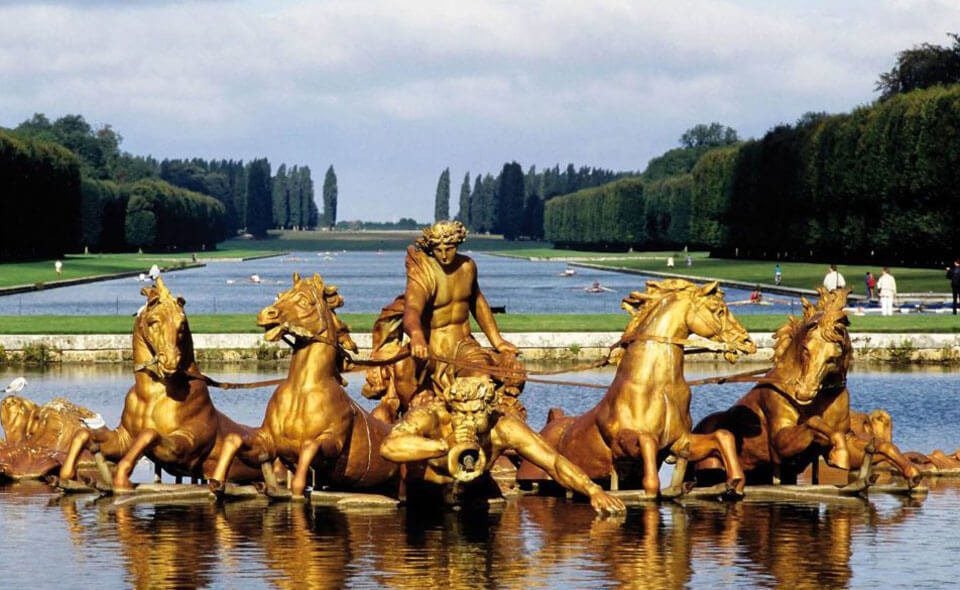
At the site of the pool where the fountain is located, there was a swan pond during the reign of the first builder of the residence (Louis XIII). Whether swans actually lived there is unknown. But for the fountain’s theme, the former name was fitting: these winged creatures were part of Apollo’s mother’s entourage. The god rides a chariot across the sky, mirroring the path of the sun: after all, it is Apollo who illuminates the earth. But for the sake of a successful composition, the chariot moves in the opposite direction.
However, the ripples on the water and the sunlight create a complete sense of movement. Apollo drives his chariot along the Grand Canal, making the god’s journey endless. The fountain’s jets form a lily, the heraldic symbol of the French monarchs. The central jet shoots up to 20 meters, while the side jets reach only 15 meters. But even that is impressive. La Fontaine described the Apollo Fountain. The writer was amazed by the simultaneous combination of fire and smoke created by the ordinary water jets.
Lambinet Museum

The building was constructed for his family by Louis XV’s contractor, Blanchard, who designed the project himself. However, the history of the center begins in the mid-19th century when Lambinet bought the building. He started collecting items, including porcelain and antique knick-knacks. Lambinet’s heirs donated the mansion to the municipality in the 1930s, and it was decided to house an exhibition there. The Blanchard collection was taken as the basis and supplemented with artifacts previously stored in the library.
Today, the Lambinet Museum offers an opportunity to see:
- Paintings from the 16th to 19th centuries
- Sculptures
- Documents
A special section tells the story of the French Revolution and the city’s role in it. Interestingly, there are few visitors to the Lambinet Museum, allowing for a peaceful stroll through the halls and the study of priceless artifacts.
Royal Opera
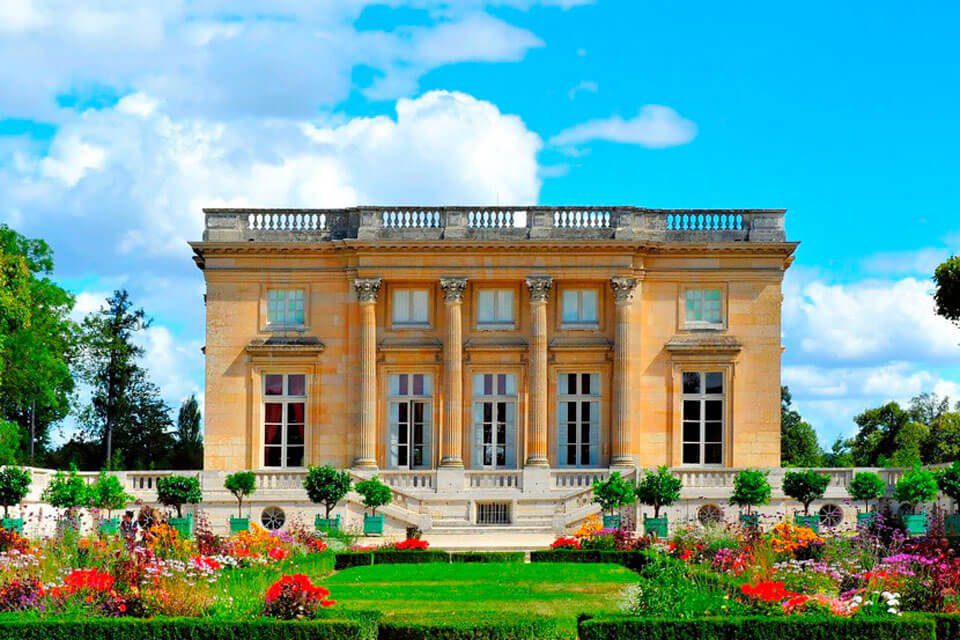
This unique late 18th-century building was long in a dilapidated state and almost forgotten. Yet, from the moment it opened, the opera amazed with its exquisite interiors and innovative productions. The hall’s technical equipment was the most advanced. Balconies lacked partitions, allowing more spectators to be accommodated: 700 people. The hall was lit by a large ceiling fresco depicting Apollo crowning outstanding figures of the arts.
Surrounding the central chandelier are 12 smaller lamps with cherubs. The pride of the architects: the marvelous acoustics. The audience in both the first and last rows could hear equally well. But soon, music and dance in the opera were replaced by the passionate speeches of politicians: the monarchy fell, and the republic was established. Eventually, the building was abandoned. During the Nazi occupation, the building suffered significant damage. The opera was remembered in the 20th century. But restoring its former appearance required reconstruction.
The restoration was completed only in 2009. The restorers did an excellent job: the Royal Opera now has its original appearance. The interiors have been fully restored. The technical equipment for performances is state-of-the-art. The Royal Opera hosts world-famous celebrities. The repertoire can be found on the official website.
The Grand Trianon

The official residence of the Sun King was the Palace of Versailles. But over time, the monarch realized that it would be nice to have a less pompous but more cozy environment around him. However, he didn’t abandon large-scale construction, so he bought the lands of the village of Trianon. All the houses were demolished, and a palace was built on the vacant land, named Trianon. The surrounding area was landscaped with alleys and flowerbeds.
The modest facade was decorated with faience tiles. This colorful building was called the Porcelain Trianon. During Louis XIV’s reign, there was no distinction between porcelain and faience. The exterior cladding technology was imperfect: soon, the Trianon deteriorated, the tiles cracked and fell off. The Sun King ordered the ugly building demolished and a new palace built in its place. Its facade was clad in durable marble, and the building was named the Marble Trianon.
A little later, the Petit Trianon was built nearby. The Marble Trianon was then renamed the Grand Trianon. The interiors, although modest (by Louis XIV’s standards), are still impressive. The amorous monarch used the building for meetings with numerous mistresses. Later heirs rarely visited the palace, and it gradually fell into oblivion.
The Petit Trianon

A well-maintained park alley leads from the Grand Trianon to the Petit Trianon. Benches are placed along the way for resting. It’s easy to imagine the Sun King himself enjoying the peace and solitude in the shade of the trees. This palace was built by the Sun King’s heir for his mistress. But Madame de Pompadour died before receiving the gift. Therefore, the palace first went to a new mistress, then to Marie Antoinette (after the death of her royal husband). The interiors are not as lavish as in the official residence, more ascetic. It seems the architect’s goal was to prevent accidental encounters.
This idea is suggested by the corridor curves, sudden turns and dead ends, and the narrow, arrow-slit-like windows. The setting is also quite modest, different from other royal residences. There is no hint of the ostentatious luxury of Versailles; the interior is rather ascetic. But the visit leaves an impression of tranquility. To appreciate all the buildings in the park, it’s worth buying a ticket valid for two days. This way, the grandeur of the main residence won’t overshadow the modest charm of the Petit Trianon.
Marie Antoinette’s Village

Louis XV used the Grand and Petit Trianons for his pleasures. Queen Marie Antoinette also needed a place to rest. At her request, a real village was built along the lakeshore in the Trianon estate in the late 18th century. The roofs of the houses were made of reeds, and the walls were artificially aged. Each house had a garden and fruit trees planted nearby.
The windows were decorated with flowers in white and blue pots. Artificial streams and mounds were created on the territory. To bring the queen’s ideas to life, the botanical garden had to be ruined. This action outraged European botanists. Externally, the buildings completely copied rural houses, but inside they were furnished with royal luxury. Marie Antoinette loved to come here to escape court life.
She would put on a peasant dress and stroll through the ideally clean village streets. Sometimes her children accompanied her, sometimes a few friends. Despite its decorative purpose, the village brought significant income: vegetables, fruits, and dairy products produced here were supplied to the royal table. Houses for the miller and dairy farm workers were built to service the estate.
The queen personally owned:
- Boudoir
- Salon
- Kitchen
- Billiard room
- Main house
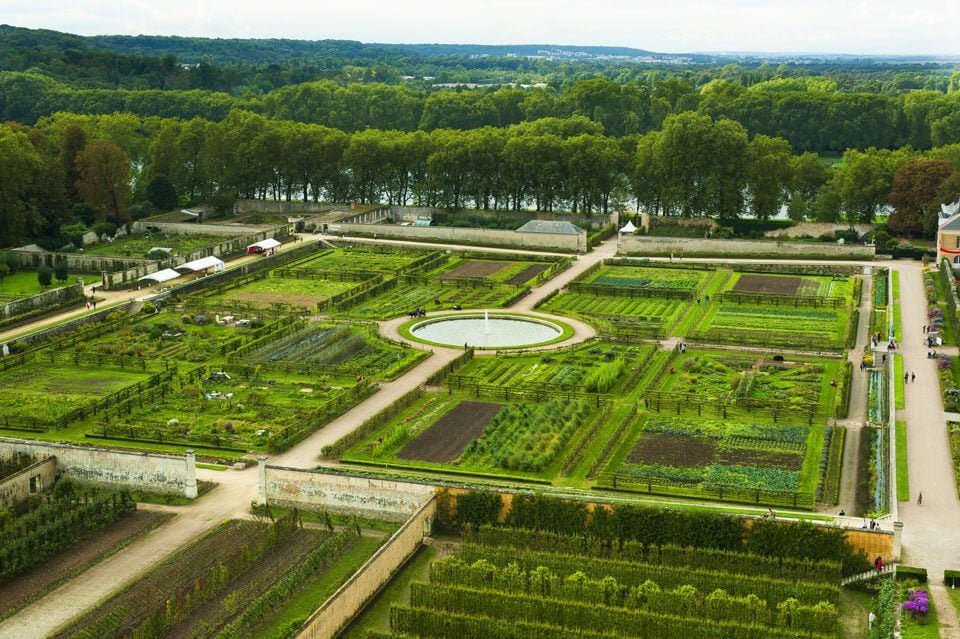
The buildings are scattered over a fairly large area, so be prepared for long walks. It’s recommended to wear comfortable shoes and bring drinking water. To visit the village, it’s worth purchasing a combined ticket for entry to the Trianon estate.
King’s Vegetable Garden

Louis XIV knew a lot about culinary delights. To enjoy them, a constant supply of fresh vegetables and fruits was required for the palace. But the vegetable garden wouldn’t have existed without the dedicated efforts of Jean-Baptiste de La Quintinie. Initially, he didn’t plan to engage in gardening: he studied to be a lawyer. After completing his studies, La Quintinie successfully practiced his profession until he was invited to tutor the son of the Minister of the Court of Accounts.
La Quintinie not only educated the heir but also expanded his own knowledge: traveling through Italy, he learned about new plant varieties and studied the technology of growing vegetables and fruits. Upon returning to France, La Quintinie abandoned legal practice and began to focus on botany. His activities did not escape the keen eye of Louis XIV. The monarch invited the scientist to manage the vegetable garden. La Quintinie proved to be a talented engineer: he devised an underground heating system for the beds, allowing vegetables to ripen year-round.
Louis chose an entirely unsuitable location for the garden: a swampy lowland with poor peat soil. La Quintinie solved this problem as well: he drained the area and enriched it with manure from the stables. Soon, the insatiable monarch desired bananas and pineapples on his table. La Quintinie built several greenhouses. The vegetable garden project benefited not only the royal family: noble lords began growing vegetables near their homes. Today, the vegetable garden still exists. Exotic fruits and local vegetables are still grown there, but on a much smaller scale.
Royal Tennis Hall
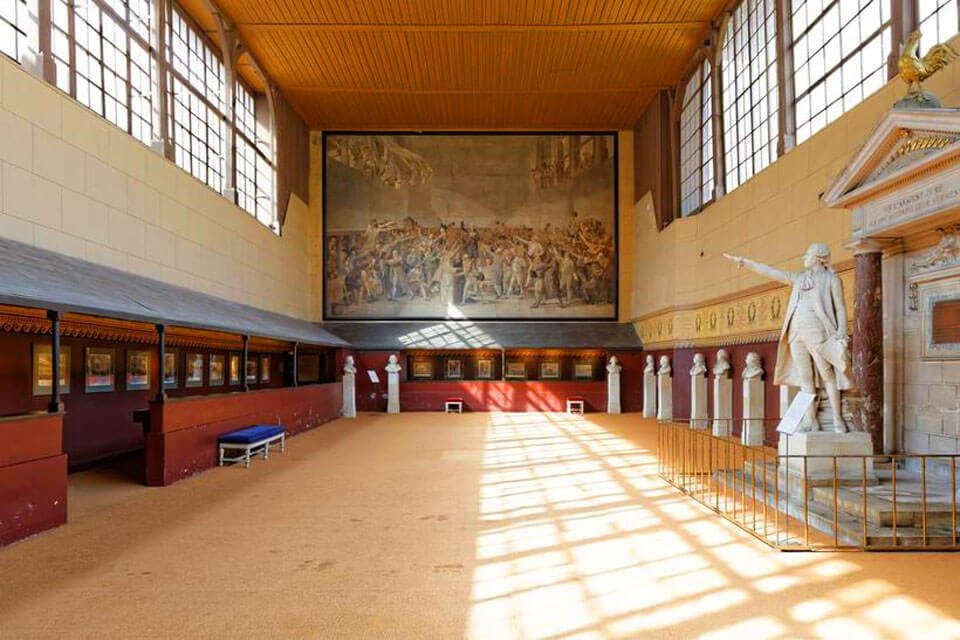
In this hall, Louis XVI played ball (a precursor to modern tennis). The room gained fame during the Estates-General when representatives of the Third Estate, who were denied entry to the main hall, held their session here. They made an oath to stay in the room until the monarch signed the constitution.
Saint-Louis Cathedral
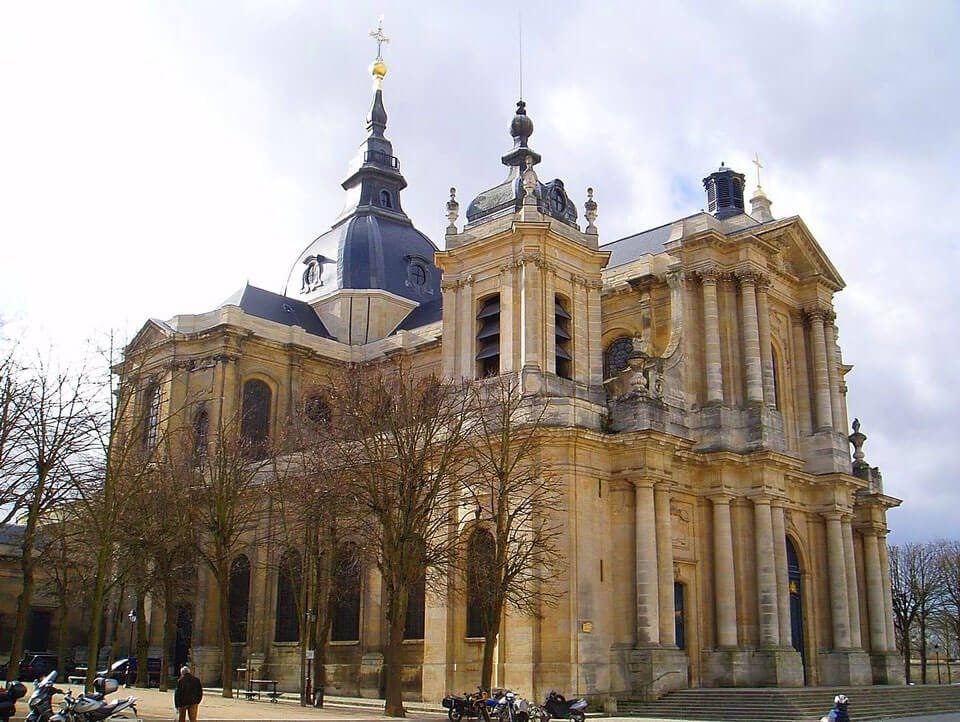
This cathedral has an unusual history. Even before the ensemble’s construction, there was a small church dedicated to Julian of Brioude on the site where the cathedral now stands. But new buildings were constantly needed to serve the grand project, so the church was demolished. After some time, a wooden chapel was built for the residents of this part of the city, but it didn’t last long. On the same site, construction of a new church began again.
This time, it was designed by Jacques Hardouin-Mansart. The construction took 12 years, but the result exceeded all expectations. The church was built in the traditional Catholic (Latin) style: it has the shape of a cross. The central nave is surrounded by side aisles, which connect to several chapels.

